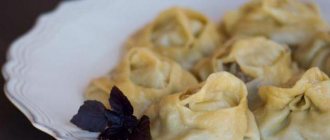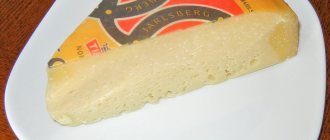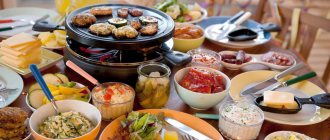Brief description of Cuban cuisine
Cuban cuisine is influenced by Spanish, French, African, Arabic, Chinese and Portuguese cultures. Traditional Cuban cuisine is primarily peasant cuisine. Most dishes are fried or simmered. They are based on a few basic spices such as garlic, cumin, oregano and bay leaf. Many dishes are based on Sofrito, which is a mixture of onions, green peppers, garlic, oregano and ground pepper, quickly fried in olive oil. Sofrito – gives the dish a special taste. It is used to cook black beans, stews, various meat dishes and tomato sauce.
Meat and poultry are usually marinated in citrus juices, mainly lemons, and then broiled over low heat until the meat is tender and literally falls off the bone. Another important element of Cuban cuisine are root vegetables such as yucca, taro and sweet potatoes, which can be found in most Latin American countries. These vegetables are fried in combination with a marinade called mojo, which consists of olive oil, lemon juice, pieces of onion, garlic, cumin and a little water.
Cooking process
- Heat the oil in a frying pan. Add garlic, bay leaves and onion. Cook until onion is soft, about four minutes. Stir constantly during the process.
- Then add minced meat and fry. When the meat is browned, remove from heat and remove excess fat.
- Then pour in the wine. Stir. Add tomato paste, stuffed olives (chopped), cherry halves, cumin, oregano, cayenne pepper. Simmer over low heat for eight minutes. Stir constantly. Season with salt and pepper before serving.
Cuban snacks
Chicharron, or fried pork rinds, is a favorite Cuban snack. I must admit that this is a rather unusual dish. Spiced dried banana slices and yucca chips are next on the snack list. Sweet and spicy pastelitos are eaten in the morning or early afternoon. These are flaky pastry cookies filled with a sweet or spicy filling. Cubans also eat tamales, a kind of flatbread made from corn flour filled with various fillings and wrapped in corn leaves. They are not as spicy as their Mexican cousins. They add less chili, but more garlic and onions.
Preparation
- Rinse the watercress. Remove unwanted leaves. Dry. Place in the refrigerator.
- Peel the pineapple. Cut the pulp into rings.
- Place the rings on a baking sheet, sprinkle with sugar (1 tbsp). Place in the oven to caramelize, select the “Grill” mode. Five to ten minutes will take each side.
- Then let the pineapples cool and cut into cubes.
- Prepare the dressing. To do this, mix olive oil with garlic cloves. Then add lemon juice, cumin, salt and pepper. Season the salad with half of the resulting liquid from the refrigerator.
- Peel the avocado and cut into cubes.
- Assemble the dish. First, lay a bed of watercress and dressing. Place avocado and pineapple on top, after mixing these fruits with the dressing. Top with thin half-rings of red onion.
Moors and Christians, classics of Cuban cuisine
Moros y Christianos is a very popular Cuban dish consisting mainly of black beans and white rice. The name of this dish is a fascinating reference to medieval Spain, when the Moors from North Africa fought the Christians for control of Spain. Moors and Christians - is a national dish, and is prepared on the occasion of important family celebrations. Black beans also appear in the famous Cuban soup, which is enriched with oregano, peppers, onions and garlic. Another classic dish is tostones, which are sliced bananas fried in fat.
Sandwich making process
- First make the brine. To do this, pour one and a half glasses of water into a saucepan, add sugar, garlic, ginger and three tablespoons of salt. Stir. Bring to a boil. Then remove from heat. Add rum. Cool the resulting mixture to room temperature.
- Then take a bowl and place the meat in it. Fill with the resulting brine. Cover with a lid. Place in the refrigerator for an hour (longer is possible).
- Prepare the salad. Soak the shallots in cold water for five minutes. Then mix the cabbage, onion and salt (1.5 tsp) in a colander. Leave it like this for about thirty minutes or an hour. This is necessary in order to drain the juice. Then rinse and dry the cabbage. Place in a large bowl and toss with vinegar and oil. Add some salt.
- Preheat the grill.
- Dry the tenderloin. Grease with oil and sprinkle with pepper.
- Grill. Turn over as needed. Cook until strips form on each side (one strip takes about eight minutes). How to check readiness? Insert a food thermometer into the thickest part of the meat. If it shows more than 63 degrees, then you can proceed to the next step. Namely: place the tenderloin on a cutting board, leave for five minutes, then cut.
- Grill the buns.
- Lubricate the bottom half of each with mustard and mayonnaise.
- Place cheese on top and melt slightly.
- Cut the meat into thin slices. Place on bread along with pickled cucumbers, peppers and lettuce. After which the dish can be served.
Cuban desserts
Cuba is a country whose main crop is sugar cane. Therefore, traditional Cuban cuisine cannot do without desserts. They have three tastes: sweet, sweet and sweet. Cubans never skimp on sugar, and their desserts are undoubtedly some of the sweetest in the world.
One of the most popular desserts is flan (pudding). It is also one of the easiest desserts in the world. Delicate and creamy texture literally melts in your mouth. The flan can be served hot or cold, but it is important to pour plenty of syrup on top. Flan can be found on the menu of most Cuban restaurants and can even be purchased at bakeries.
Another Cuban rarity is turrons. These almond candies are traditional Cuban Christmas sweets. They come in different versions, with chocolate, nougat, honey and fruit.
Every Cuban bakery also has capuchins, that is, small cookies with an interesting conical shape. The dough contains a lot of yolks, hence their color, and each cookie is filled with sweet sugar syrup.
What do restaurants serve for locals?
On the island there are government restaurants for tourists, private restaurants in guest houses - paladars, and pesos restaurants for locals. In the first two, only cookies (tourist currency equal in value to the dollar) are accepted for payment; the average price of one dish is 8-15 CUC. If you live in casa particular, that is, you rent a room from Cubans, then you will be fed home-cooked meals (read: chicken with rice) for 6-8 CUC. Cubans cook simply, but nourishingly and tasty.
I ate in restaurants where ordinary working-class Cubans eat. These are small rooms similar to this:
The choice of dishes in such establishments is limited, but prices are indicated in pesos - and you will not find a single dish more expensive than $2. A typical set lunch looks like this:
- bean, tomato, vegetable puree soup
- pork or chicken, served with rice and black beans, yuca (a root vegetable similar to boiled potatoes), or fried green plantains tostones. burger with cutlet, cheese, “salad” and side dish - rice or bananas.
- juice of mango, guanabana, cherimoya, guava.
This lunch costs 30-35 pesos ($1.5).
Sources
| National cuisines | |
| Europe | Austrian Albanian Bashkir Belarusian Belgian Bulgarian Bosnian British Welsh Hungarian Greek Danish Jewish Irish Icelandic Spanish Italian (Venetian Lombard Roman Sicilian) Karelian Cypriot Kosovar Latvian · Lithuanian · Liechtenstein · Macedonian · Maltese · Mari · Moldavian · German · Dutch · Norwegian · Polish · Portuguese · Romanian · Russian · Serbian · Slovak · Slovenian · Tatar · Ukrainian · Finnish · French · Croatian · Montenegrin · Czech · Chuvash · Swedish · Swiss · Scottish · Estonian |
| Asia | Abkhazian · Azerbaijani · Arabic · Armenian · Afghan · Brunei · Butanskaya Kantonskaya · Pekinskaya · Sichuanskaya · Shanghai) · Korean · Lebanese · Malaysian · Maldivian · Mongolian · Nepalese · Ossetian · Pakistani · Palestinian · Singaporean · Syrian · Tajik · Thai · Tibetan · Turkish · Turkmen · Uzbek · Uyghur · Philippine · Chukchi · Sri Lankan · Even · Yakut · Japanese (Okinawa) |
| Africa | Algerian · Egyptian · Zimbabwean · Libyan · Madagascar · Moroccan · Tunisian · Ethiopian · South African |
| America | American · Argentine · Bolivian · Brazilian · Venezuelan · Haitian · Guatemalan · Honduran · Dominican · Indian · Canadian · Colombian · Cuban · Costa Rican · Mexican · Nicaraguan · Panamanian · Paraguayan · Peruvian · Puerto Rican · Salvadoran · Suriname · Uruguayan · Chilean · Ecuadorian · Eskimo |
| Oceania | Australian · Hawaiian · New Zealand · |
Food prices in Cuba
- Currency: CUP, moneda national.
- 1$ = 25 CUP
- Relevance: May 2017
Cuban cuisine in a restaurant for locals - a small selection, but very low prices.
Pizza with cheese 12 pesos, with ham or double cheese 17 pesos.
Spaghetti with tomato sauce, cheese and jamon - 17-20 pesos.
Tamal - 5 pesos.
Burger (with cutlet or egg) - 5-6 pesos.
Sandwich with different fillings - 30 pesos. Found in tourist places.
Flan (dessert) - 5 pesos.
Ice cream - 5 pesos.
Lobster - $15-25. Cuban cuisine rarely includes seafood, but good lobster, crab and shrimp can be obtained on the island at reasonable prices. Look for them in coastal tourist restaurants.
Fresh juice. Mango, tamaringo and other fruits are 2-3 pesos, and sugar cane juice is generally 1 pesos.
Ice with syrup (granisado), and any other soft drinks - 2-3 pesos.
Coffee - 1 pesos (fix price).
Water. 1 - 1.5 $ for a half-liter bottle in tourist places. A one and a half liter bottle of warm (!) water in residential areas will cost approximately $1.5 - $2, if you even find such a rarity. Of course, Cubans themselves buy drinking water in large containers, but tourists are left with juice and beer.
Beer. Alcohol in Cuba costs the same. If a beer costs 1 CUC ($1), then the cafe is state-owned. If $1.25 is a private establishment. By the way, beer is ALWAYS sold ice-cold, and water is almost always warm. Now you understand why tourists in Cuba are so happy.
Rum 0.75 l : Havana Club 3 years aged - $6, 7 years aged - $11, 15 years Gran Reserva - $130. If you search, you can find the brands Caney, Santiago de Cuba and even Matusalem, which is no longer officially produced, but can be obtained in the city of Santiago de Cuba even in a branded bottle. This rum costs much more, but is also of higher quality.
A cocktail in an inexpensive bar on the Malecon is $3, in Floridita — $8. The first bar will taste better, and they won’t regret the rum.
What to drink in Cuba
Cuban rum
Cuban rum is a strong drink made from sugar cane.
The most famous budget brand, Havana club, is sold at the same price set by the state: $5-16, depending on the age.
Cubans simply prefer cheap rum in cardboard boxes (similar to baby juice boxes). It's called Tumbao or Planchao, and unless you have a liver of steel, it's best not to try it.
Life hack: you can pay your helpers (if you had to use their service), it will be cheaper than giving them cookies (equal to the price of a dollar) or treating them in a restaurant. This is also a great way to win over local drunks in case you need it :)
Popular rum-based cocktails
- Cuba libre (light rum, Coca-Cola, lime). Cuba is an incredible country where Coca-Cola is more valuable than rum. The bartender will easily pour you a full glass of rum, just sprinkle it with cola.
- Mojito (rum, soda, lime, fresh mint, sugar, ice). According to legend, this is one of Hemingway’s favorite cocktails, which he always ordered at the Bodeguita bar - but the writer does not mention the mojito in any of his books. But he wrote a lot about the daiquiri from Floridita. And in general about all your favorite bars and all the rum you drink :)
- Cubata is the same Cuba libre, but with dark rum.
- Daiquiri (rum, crushed ice, sugar, lime). Another Hemingway favorite. He loved the version of this cocktail with double rum, Maraschino liqueur and grapefruit juice.











